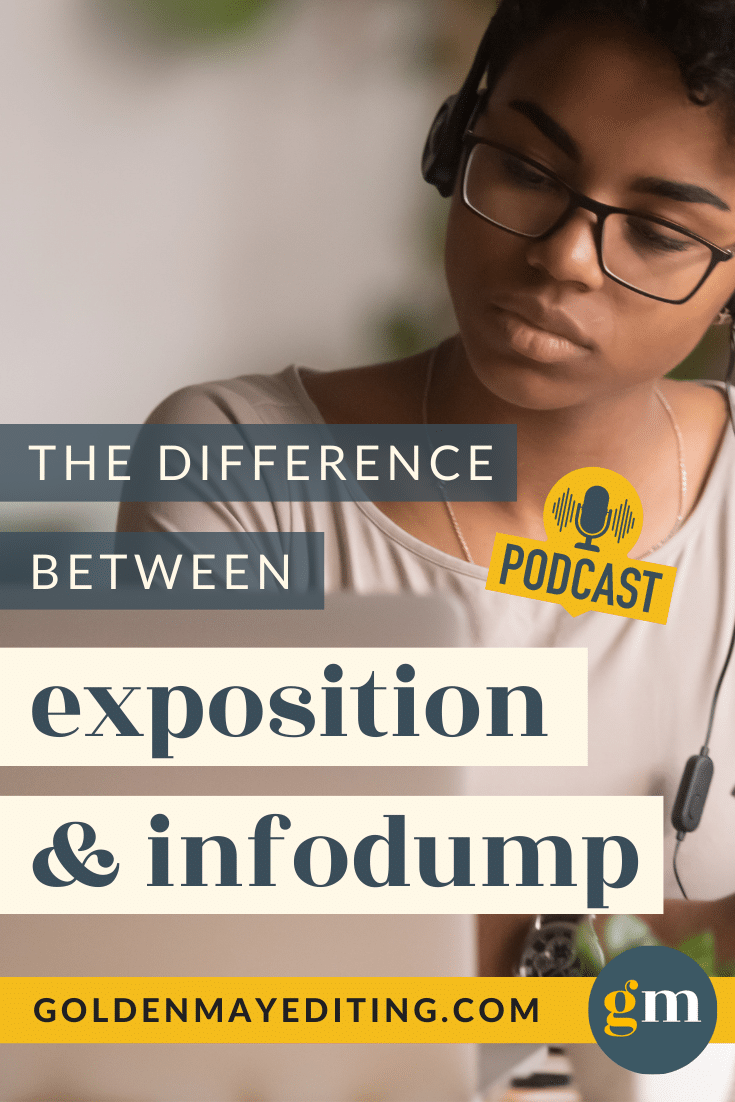We’ve all heard the ‘rule’: Exposition is ‘good’ but Infodumping is ‘bad’.
But wtf does that actually mean? What is the difference?
Truth is, these two things are very similar.
Paragraphs (or even pages) of exposition and infodumps do the SAME thing: they convey information to the reader.
The difference lies in the reason for the information.
Exposition is a chunk of information that’s given to the read in a way that purposeful, relevant, and meaningful to the present story.
An infodump is a chunk of information that ISN’T any of those things: it’s disconnected from the present story, unnecessary, and lacks meaning.
On today’s episode of the Story Magic✨ podcast episode, we break these two terms down further.
With deep discussion, some personal stories, and analysis of an excerpt from The Poppy War by R.F. Kuang, we actually SHOW you the difference.
By the end of the episode, you’ll be able to wield strong exposition in your scenes (whether it’s world building, backstory, or some other important contextual information) that is:
✨ purposeful to the immediate plot
✨ relevant to what’s going on in the story when it’s revealed
✨ meaningful to the character on the page
You’ll never be confused about what information is needed on the page, and when, again!
Here is the excerpt from the episode if you’d like to read along.
Excerpt from The Poppy War by R.F. Kuang
“That night, cradling a stolen candle on the floor of the cramped bedroom that she shared with Kesegi, Rin cracked open her first Keju primer.
The Keju tested the Four Noble Subjects: history, mathematics, logic, and the Classics. The imperial bureaucracy in Sinegard considered these subjects integral to the development of a scholar and a statesman. Rin had to learn them all by her sixteenth birthday.
She set a tight schedule for herself: she was to finish at least two books every week, and to rotate between two subjects each day. Each night after she had closed up shop, she ran to Tutor Feyrik’s house before returning home, arms laden with more books.
History was the easiest to learn. Nikan’s history was a highly entertaining saga of constant warfare. The Empire had been formed a millennium ago under the mighty sword of the merciless Red Emperor, who destroyed the monastic orders scattered across the continent and created a unified state of unprecedented size. It was the first time the Nikara people had ever conceived of themselves as a single nation. The Red Emperor standardized the Nikara language, issued a uniform set of weights and measurements, and built a system of roads that connected his sprawling territory.
But the newly conceived Nikara Empire did not survive the Red Emperor’s death. His many heirs turned the country into a bloody mess during the Era of Warring States that followed, which divided Nikan into twelve rival provinces.
Since then, the massive country had been reunified, conquered, exploited, shattered, and then unified again. Nikan had in turn been at war with the khans of the northern Hinterlands and the tall westerners from across the great sea. Both times Nikan had proven itself too massive to suffer foreign occupation for very long.
Of all Nikan’s attempted conquerors, the Federation of Mugen had come the closest. The island country had attacked Nikan at a time when domestic turmoil between the provinces was at its peak. It took two Poppy Wars and fifty years of bloody occupation for Nikan to win back its independence.
The Empress Su Daji, the last living member of the troika who had seized control of the state during the Second Poppy War, now ruled over a land of twelve provinces that had never quite managed to achieve the same unity that the Red Emperor had imposed.
The Nikara Empire had proven itself historically unconquerable. But it was also unstable and disunited, and the current spell of peace held no promise of durability.
If there was one thing Rin had learned about her country’s history, it was that the only permanent thing about the Nikara Empire was war.”
Kuang, R. F.. The Poppy War: 1 (pp. 16-17). HarperCollins. Kindle Edition.
Why this works:
- The exposition is relevant to the present story and the future story. It shows us what Rin is learning and how she sees the world she’s about to step into at her new school.
- The exposition is not just explaining the history of Nikan for no purpose — it is fully and completely setting up the conflict that is the plot of this story.
- The history we’re given is from Rin’s studies for the Keju, not just random facts spouted to ‘catch us up’
- This passage dances around the major themes of this story: war, unity, conquering.
- All the details mentioned in this exposition come back into play later: the Federation of Mugen, the Empress, the Hinterlands and the western Hesperians, the Red Emperor. Everything in this passage is important to what Rin will specifically encounter in this book.
Listen to ‘The balance between exposition + infodump’ here. In it, we break down this analysis futher!
Listened? Loved it? Hit reply to let us know what you think of the episode! And please consider leaving us a rating + review — it really helps us connect with other writers out there.
Happy writing!








Leave A Comment